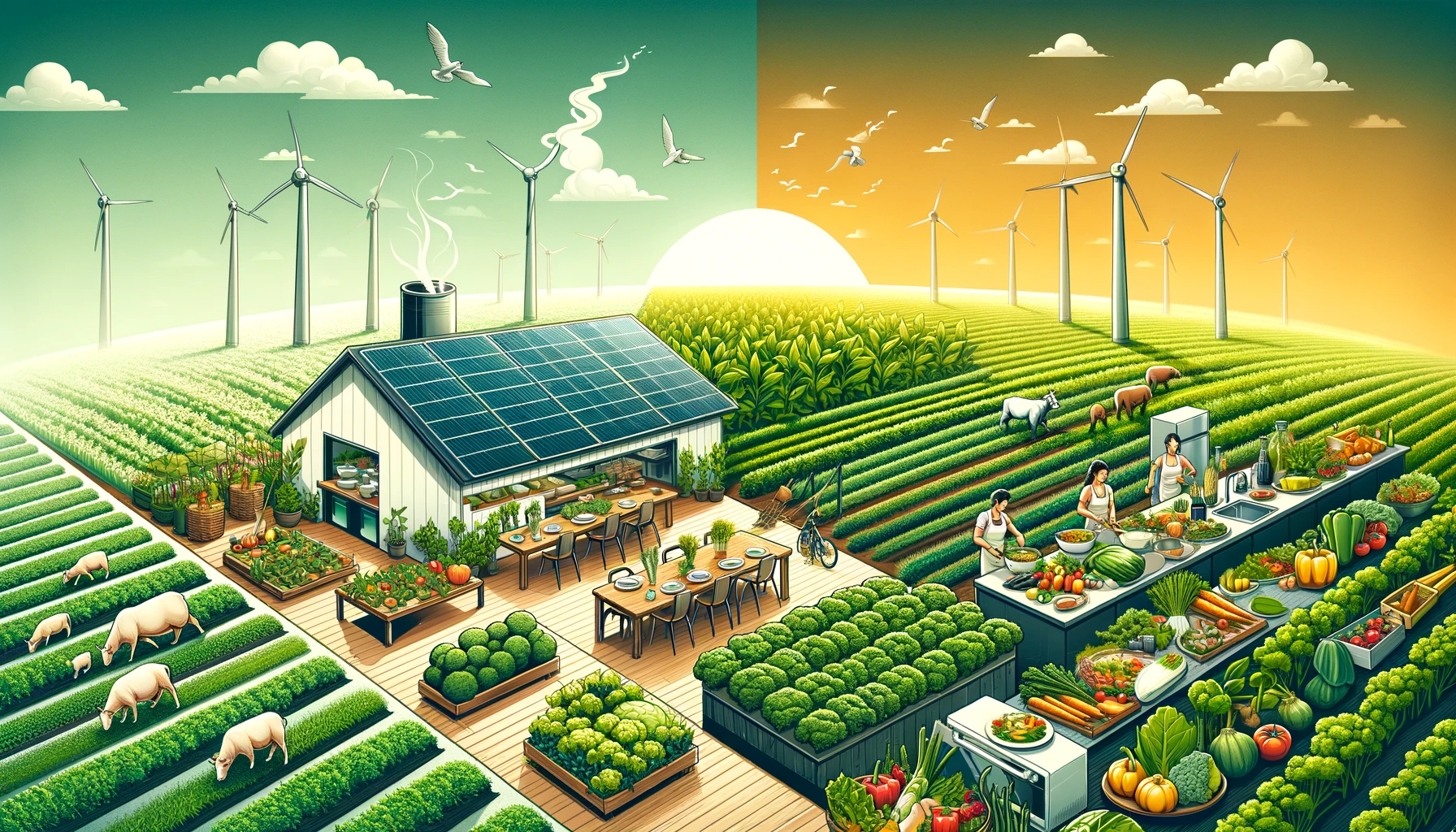The global food system is intricately connected with environmental sustainability. From the soil health on farms to the choices made by consumers at dinner tables, every step in the food chain offers opportunities for greener practices. Here’s how we can weave sustainability through the fabric of our food chain.
1. Sustainable Farming Practices
Practices like crop rotation, agroforestry, and organic farming enhance soil fertility, reduce chemical use, and promote biodiversity, offering long-term agricultural resilience1.
2. Efficient Water Management
Drip irrigation and rainwater harvesting techniques can optimize water use, crucial in an era of increasing water scarcity2.
3. Reducing Food Waste
Approximately one-third of the food produced globally is wasted. Solutions like cold storage facilities, better transport logistics, and consumer education can significantly reduce wastage3.
4. Locally-Sourced Produce
Local produce reduces the carbon footprint associated with transportation. It also often results in fresher, more nutrient-rich food for consumers4.
5. Plant-Based Diets
Shifting towards plant-based diets can drastically reduce the environmental footprint of our meals. Livestock farming is notably resource-intensive and contributes significantly to greenhouse gas emissions5.
6. Green Packaging
Opting for biodegradable, recyclable, or reusable packaging over plastic can considerably reduce landfill waste and environmental pollution6.
7. Consumer Awareness and Education
Empowering consumers with knowledge about the environmental impact of their food choices can drive demand for more sustainable products7.
Conclusion
The journey of food from farm to table is filled with opportunities to make environmentally conscious decisions. By embracing these sustainable practices, we not only ensure food security for future generations but also play our part in nurturing a healthier planet.
References:
- Altieri, M. A. (1999). The ecological role of biodiversity in agroecosystems. Agriculture, Ecosystems & Environment, 74(1-3), 19-31.
- Postel, S., Polak, P., Gonzales, F., & Keller, J. (2001). Drip irrigation for small farmers. Water International, 26(1), 3-13.
- Gustavsson, J., Cederberg, C., Sonesson, U., & Emanuelsson, A. (2011). Global food losses and food waste. Food and Agriculture Organization of the United Nations, Rome.
- Martinez, S., Hand, M., Da Pra, M., Pollack, S., Ralston, K., Smith, T., … & Newman, C. (2010). Local food systems; Concepts, impacts, and issues. USDA Economic Research Service.
- Steinfeld, H., Gerber, P., Wassenaar, T., Castel, V., Rosales, M., & de Haan, C. (2006). Livestock’s long shadow: environmental issues and options. Food and Agriculture Organization of the United Nations, Rome.
- Williams, H., Wikström, F., Otterbring, T., Löfgren, M., & Gustafsson, A. (2012). Reasons for household food waste with special attention to packaging. Journal of Cleaner Production, 24, 141-148.
- Vermeir, I., & Verbeke, W. (2006). Sustainable food consumption: Exploring the consumer “attitude – behavioral intention” gap. Journal of Agricultural and Environmental Ethics, 19(2), 169-194.


